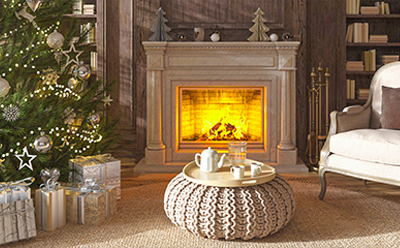Buy vs. Build: Which New Home Option Is Right for You?
From the area you’d like to live in and the type of yard you’d prefer to the number of bedrooms and bathrooms you need, choosing a new home includes an array of questions to answer — including whether you should buy your next home or build it.

Answering that "build or buy" question satisfactorily depends on a variety of factors — and what might be best for you and your family. Here are some key considerations to help you decide.
Cost
Texas’ largest cities are currently among the top U.S. homebuilding markets.1 But, with the increasing cost of land and inflation’s impact on construction materials and labor costs, building a home can be more expensive than buying one.
For example, the median sales price2 of new homes sold — houses built for the homeowner and then financed through a mortgage — was $426,600 for the month of June in 2025. Meanwhile, the median sales price of existing homes sold3 around the same time was $422,800.
»Tip: Keep in mind that buy vs. build cost comparisons vary by region, city and neighborhood, so it might be more cost effective to build a house in the area where you want to live. Plus, the choices you make in construction materials, customizations and appliances impact your building costs, so be sure to consider those costs as you weigh your options.
Timing
How soon do you need to move? Timing is important to take into account, especially when it comes to building a house. According to the U.S. Census Bureau, the average time to build a new single-family home in the U.S. was 7.7 months4 in 2024.
That figure doesn’t include the time before construction starts, when it may be necessary to shop for land, apply for permits and wait for approval. So, if you need to complete your purchase and move quite soon, purchasing an existing home may be your best option.
Availability
At any given time, there may be a limited number of homes on the market that meet all your requirements. There may also be a lot of competition among buyers.
If the real estate market in the community you're targeting is competitive, consider whether you’re willing to purchase an existing house that doesn’t quite meet all your needs now — then remodel or expand it later. You may decide you’d rather work with a builder to create your ideal home in a more desirable area, even if you have to wait longer to move in.
Location
What kind of neighborhood do you have in mind? If you have your heart set on an established community with mature shade trees you may find more options among existing homes.
If you want a fantastic view at the edge of town or a home in an older neighborhood that’s undergoing a revitalization, a new build may be the most practical way to get what you want.
Maintenance needs
Something else to consider is how soon an existing home might need major maintenance. Depending on the age of the property and its current condition, when can you expect to need a new roof, fence, HVAC system, water heater or appliances?
In addition to planning for the timing and cost of these maintenance projects, you’ll also want to think about the time involved in hiring contractors and arranging for the work to be completed.
Unique design requirements
If you have specific design requirements that aren’t easy to find or retrofit into existing properties, working with a builder specializing in what you need may be the way to go.
- Green buildings: Older homes often have a great deal of charm, but they’re not always energy efficient or easy to upgrade. You may want to work with an Energy Star5 or LEED certified6 professional to build a home that keeps your utility bills under control.
- Multigenerational living layout: More than 8% of U.S. households have three or more generations living in the same home, and in parts of Texas, the rate of multigenerational living7 is even higher. But it’s not always easy to find existing homes with space and privacy for everyone in a busy household. When working with a builder, you may find it possible to create a home that works for everyone.
- Universal and accessible design: Most existing homes were built using design principles that don’t take age and disability into account. Building a home using universal design8 principles can spare you the need to remodel or move as you and your family members age.
Work-at-home needs: A clearly defined office space is often necessary in the age of remote and hybrid work. Homes built since the pandemic often include dedicated offices, but older homes may need improvements.
Mental load
Building a home from the ground up allows you to create a place that’s exactly what you want. However, that means your architect, builder and designer will need your input every step of the way.
For some, that’s an exciting prospect. Maybe you’ve been waiting for years to get the house you want and can’t wait to share your ideas to make it a reality. For others, the need to weigh in on so many decisions can feel like too much time or pressure.
The takeaway
When deciding between buying or building your next home, the choice comes down to your unique needs, budget and time frame. In other words, there’s no "right" or "wrong" decision … only the one that feels right for you and your family.
If you’re ready to build or buy your next home, RBFCU’s preferred real estate company, Kuper Sotheby’s International Realty, is here to help you move beyond your expectations toward an extraordinary real estate experience.



.jpg?sfvrsn=23ceb5a8_1)
.jpg?sfvrsn=5e8db4a8_1)
